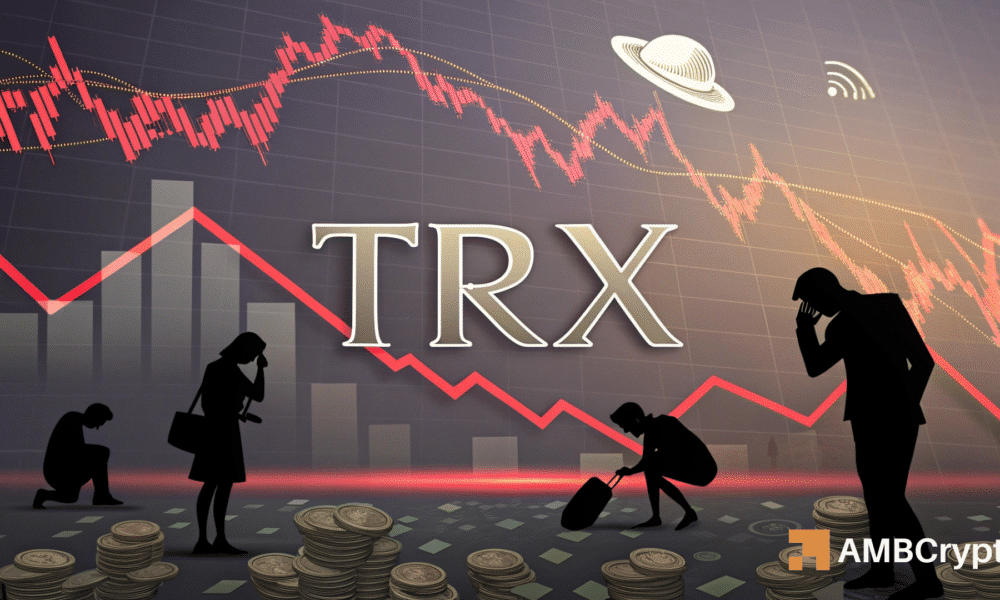The Rising Tide of TRX: Key Insights and Future Projections
Tron (TRX) has experienced a significant surge since the beginning of the year, marking a noteworthy trend that has captivated the attention of investors and traders alike. Two primary factors have driven this growth, although recent patterns indicate that the market may face a short-term correction due to heightened profit-taking activities. As we dive into the latest developments, it’s crucial to understand the underlying factors contributing to TRX’s remarkable gains and the potential implications for its future.
Robust Realized Gains: A Year-to-Date Perspective
Since the start of the current year, TRX has generated impressive realized gains, ranking third within the cryptocurrency market. Only Bitcoin (BTC) and Ethereum (ETH) have outperformed it, with realized gains of $665 million and $337 million, respectively, against TRX’s record gains nearing $1 billion. Despite recent fluctuations, TRX’s trading volume has remained robust, averaging approximately $920 million daily, which is indicative of high market interest and liquidity.
The realized gains represent a critical metric for assessing investor confidence and market strength. While TRX observed a slowdown in price movement at press time, its ability to maintain such trading volume suggests a resilience in market demand. However, investors are increasingly cautious as indicators show a shift in holder behavior, often associated with profit-taking strategies that may impact future price stability.
Underlying Factors: Burn Mechanism and Increased Demand
A primary catalyst for TRX’s recent price surge is the implementation of a burn mechanism designed to create token scarcity. Since the beginning of 2023, the Tron network has successfully burned around 40 billion TRX tokens, significantly decreasing its supply. The current month of August has seen the removal of an additional 166 million tokens, highlighting the Foundation’s commitment to this strategy. This reduction in supply has positively influenced investor sentiment, creating upward pressure on prices.
Moreover, Tron has solidified its role as a key layer for stablecoin issuance, notably with Tether’s USDT. This association generates considerable annual fees—approximately $7.57 billion—which not only underpins the network’s economic viability but also contributes to higher realized gains for TRX holders. Justin Sun, the founder of Tron, has played an instrumental role in driving interest and collaboration across various platforms, boosting the overall visibility and utility of the Tron blockchain.
The Shadow of Profit-Taking: Analyzing Market Psychology
Despite the positive trends, the cryptocurrency landscape is not devoid of risks. Recent selling pressure has hinted at an impending wave of profit-taking among TRX holders. With TRX now significantly above its 52-week low, previously recorded at $0.20 in early February, prices nearing $0.42 might trigger selling intentions. This behavior is evident in the on-chain metrics, such as the SOPR (Spend Output Profit Ratio) value of 1.04, which signals cautious optimism among investors.
According to analysis by Glassnode, many holders have remained invested since the bull market of 2020-2021. This retention, however, appears to be changing, as indicators show that the momentum may be shifting from buyers to sellers. Consequently, price action could be set for a correction, impacting TRX’s bullish narrative in the short term.
Technical Analysis: Understanding Market Indicators
When assessing TRX’s price action, technical indicators like the MACD (Moving Average Convergence Divergence) provide insight into market shifts. With the MACD showing signs of bearish sentiment, the strength appears to have slightly tilted in favor of sellers. Nonetheless, the Stochastic RSI nearing a neutral value at 40 indicates that sellers may be running out of steam. This presents a nuanced picture, suggesting that while short-term price drops may occur, the long-term potential for recovery remains intact.
Short-term Outlook: Preparing for Future Trends
In conclusion, while TRX’s recent performance has been nothing short of impressive, the prospect of profit-taking could lead to temporary price corrections. As the cryptocurrency market is known for its volatility, these fluctuations are an expected part of market cycles. Observing the performance of key indicators and market psychology will be vital for investors looking to navigate potential downturns.
The combination of a solid burn mechanism, increasing transaction fees from stablecoin issuance, and the influence of key figures like Justin Sun positions TRX favorably in the long run. Investors and developers should continue to monitor real-time market conditions, adapting their strategies accordingly. Understanding how these elements intertwine to affect TRX can help participants make informed decisions and potentially capitalize on future upward trends. As the cryptocurrency landscape evolves, keeping an eye on both macro and microeconomic factors will be crucial for anyone involved with TRX.


